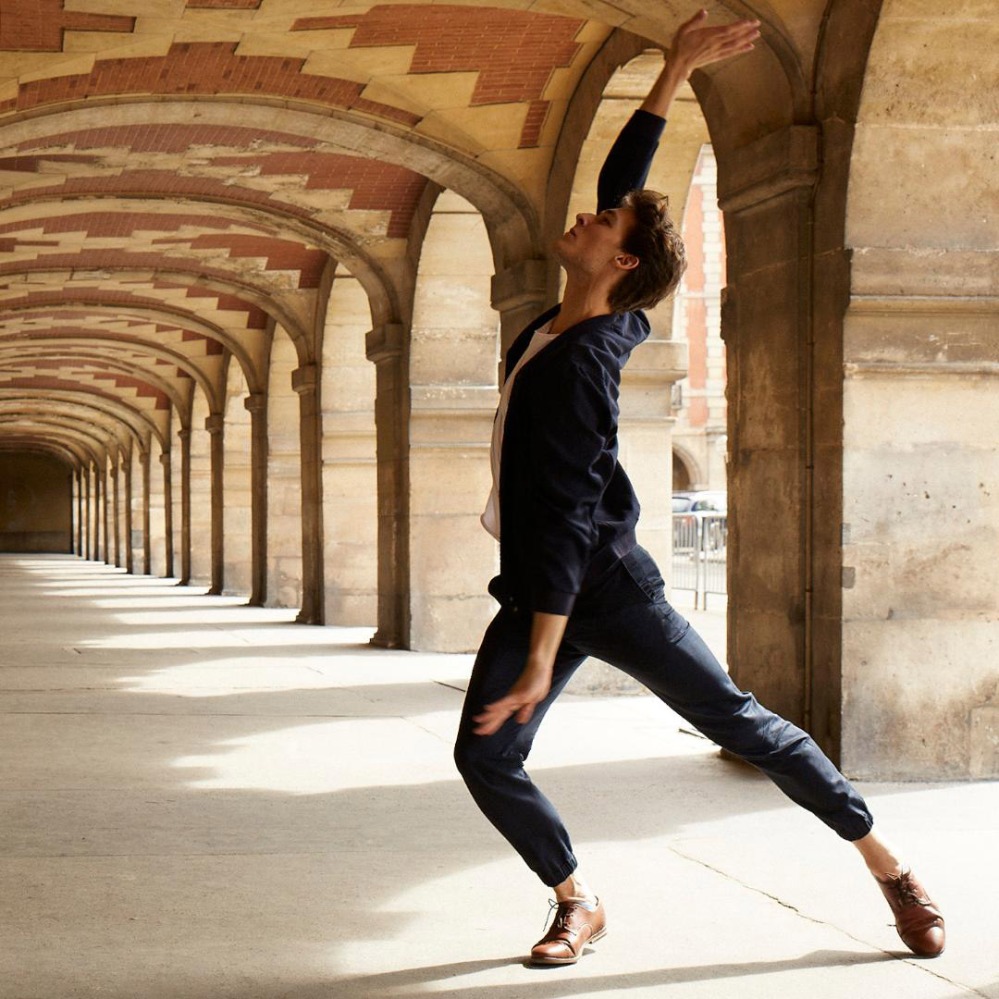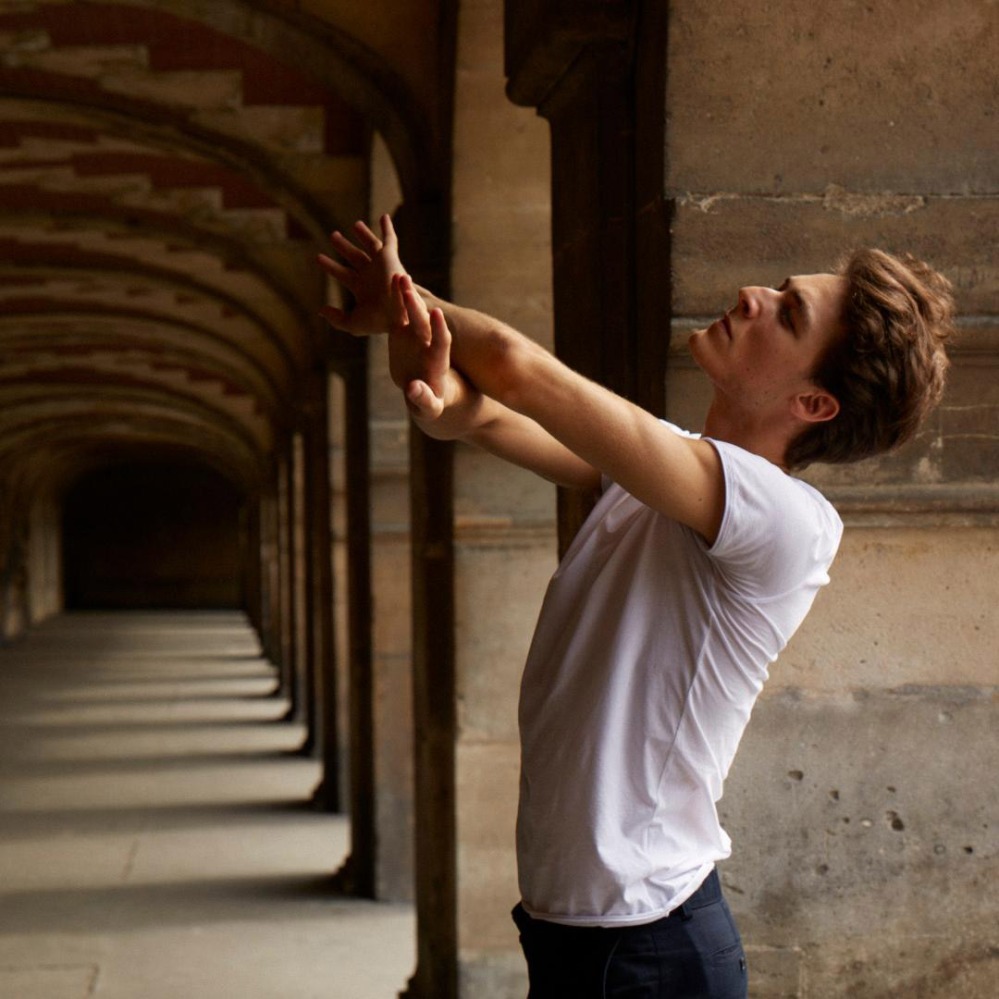At this moment, I have a slightly fragmentary and somewhat abstract vision as to what dance can do. Could it be a stepping stone to serve another purpose than art or beauty?
I do observe initiatives here and there and I have contributed my support to an association in the past. These events have a short-lived impact and attract little attention. Whatever is publicised today is restricted to the beauty of dancing, to the performances. I wonder about the possibility to trigger a popular phenomenon, on a large scale, which would touch everybody. Could one go beyond an elitist approach and punctual actions to reach a larger public? One of my ambitions as an Etoile dancer is to take part in public awareness as to what dancing can do for society.

First memories of dancing
I started dancing at the age of 9 years, following gymnastics. This craving for dancing surged during a moment of awakening.
Since I have been nominated an Etoile dancer, I have been asked numerous times how dancing came into my life. I had never asked this question of myself previously. To provide an answer is difficult, as there was never a real triggered incident to speak of. Dancing was in me, in my body, in my mind – on hold to be released. The dancing seed was just waiting to germinate.
My first dancing lesson was somewhat of a revelation. I have precise recollection of this. Everything is still vivid in my mind: the atmosphere and the layout of the place, the scents, the colours. That day, at the Conservatoire de Nantes, in a bit of a sinister mood, I wanted to dance at the barre straight away.
This barre, attached to the wall, for me took on a symbolic dimension. Something to hang on to. A structure that could engulf me. I found it very reassuring. I am a very structured person and this barre was sort of a pledge of a necessary compulsion, from which I then gained my freedom.
A lot of dancers came to dancing by means of an encounter, a spectacle, a reading or pictures. For me this was a revelation, in a physical and spiritual sense of the meaning. Dancing was clearly engraved in my life’s vision and also that of the world. My encounter with dancing took place at a crucial moment in my life – at the crossing from childhood to adulthood. A moment where the child is inspired. It was a very strong calling, almost etymological: Dancing was summoning me. Once I had started, I knew I had no other choice but to continue. It was almost like the forces of my destiny. Once one has taken this path one can only persevere. I never really questioned my ambitions in life. It was always blatantly obvious, even at the tender age of 10.
My feelings on stage
It is difficult to put words into feelings without betraying them. It is also very difficult to honestly describe a work of art, deep inside, while dancing.
The scene on stage is always changing. The stage scene for me is a representation of a day-to-day emotional journey. Everything that happened during the day is projected onto the audience, especially in ballets with no story, no pattern and no words – without any verbal structure – one expresses oneself or the music.
If you represent a person, the dancer subjects himself to a story and his freedom of expression is thus inhibited. There again, in ballets where there is some sort of starting point without an ending, our momentary emotional state can be expressed fancy-free. This freedom of expression can be slightly scary and alarming. You totally expose yourself to the audience.
I have some awesome stage memories. One escapes one’s mind and body, you become somebody from outer space for a few hours, as if stimulated and boosted by bursts of adrenaline. One experiences a thrill of ecstasy very similar to one induced by drugs. On the other hand, sometimes it is sheer hell, trepidation never leaves you throughout your stage performance.
The stage scene is quite unique – it evolves every evening, every year. It constantly changes. For me, the scenes are like moving sand. It is difficult to explain. You never know, what you will discover.
Rewards that contemporary ballet offers and classic ballet does or does not entice me
I do like the strictness and the intensity of the classic ballet. Stories are told of specific persons. I like the meticulousness of the classic ballet, the search for the perfect movement, the perfect line. And besides, I have a physical need to perform classical ballet – I have been practising it for so long!
There again, contemporary ballet offers me the freedom of perception. When I dance contemporary ballet I concentrate on the play. Every performance is different. Depending on my state of mind, I perform the movements differently. I explore new ways. Sometimes I even surprise myself. When I dance classical ballet, I coordinate and organise my body to achieve a certain movement.
One significant experience of the contemporary ballet: “Anatomie de la sensation” from Wayne McGregor is a musical score, that I do not follow. I had a direction and the freedom to improvise around it.
I also loved to work with the choreographies of Kilian. He is for precision of the movements and details. There are musical scores and choreographies to which one can assimilate according to one’s physical characteristics. I absolutely loved to interpret movements as I wanted to. There is great precision in movements but to be interpreted according to our individuality, according to our body and its idiosyncrasies. This was unique for each individual dancer. This customization is specific to contemporary dancing.
Special connection to the audience
First of all I would like to impassion happiness. A dancing spectacle is an invitation to a journey away from the daily grind. The audience should forget the length of a performance – should reflect on emotions or actual facts by means of the choreography. You can feel the audience. To hear them or perceive their silence. To feel them like acoustic vibrations. The dancers can feel the ripples from the audience. Do they consider us to be something unknown? Are they surprised? Are they captivated? Positively or negatively? In smaller auditoriums, like the Garnier, you can hear the audience. The noises reverberate. You have to tame the audience, like an animal, like a cat to carry it away with us. To understand how the audience ticks to be able to whisk them away into the story and the emotions.
Responsibility as an artist
I have responsibilities towards the Opera de Paris and towards the dancers I work with. I do not have any responsibilities towards society yet, as this has not been impressed upon me. But I would like to create this responsibility, which I think is important. “Convert the try” does not only mean to dance well and maintain the reputation of the theatre but also to engage oneself as a public figure in social and humanistic issues.
I am often told: “You are an Etoile dancer, your life is dancing, you have sacrificed yourself entirely to dancing.” But for me, dancing is not a sacrifice as such. One has to draw strength from one’s private life and from the environment to give back as an artist. At first I had to sort of remove myself, put everything aside for dancing to give me the means to achieve my goal and thus enable me to gain independence to engage in other activities. In my opinion, just like one cannot live to live, one cannot dance only to dance. One cannot dance with the sole purpose to keep the audience happy.
– Hugo Marchand, Ballet de l’Opéra national de Paris.
PC Christian Lartillot
Translation Françoise Liechti-Ruchet







Wonderful. Wonderful.
Thank you so much for your reaction!